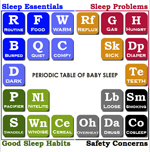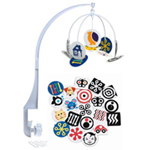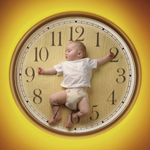 If your recently-fed baby is fussing, odds are that it’s due to gas. This is a major source of discomfort for babies, and for newborns in particular. There are two main reasons for it: (1) they eat only liquids, which often involves gulping down a lot of air, and (2) their digestive systems aren’t yet fully developed, which often seems to make digestion an uncomfortable process. If your baby has problems with gas, you’re not alone. It’s quite common and almost a guarantee with preemies. When gas prevents your baby from sleeping, here are five things you should try.
If your recently-fed baby is fussing, odds are that it’s due to gas. This is a major source of discomfort for babies, and for newborns in particular. There are two main reasons for it: (1) they eat only liquids, which often involves gulping down a lot of air, and (2) their digestive systems aren’t yet fully developed, which often seems to make digestion an uncomfortable process. If your baby has problems with gas, you’re not alone. It’s quite common and almost a guarantee with preemies. When gas prevents your baby from sleeping, here are five things you should try.
1. Burp Your Baby Early and Often
2. Elevate the Head of Baby’s Bed
3. Switch to Gentle Infant Formula
4. Try Gas Relief Drops
5. Give Your Baby Gripe Water
1. Burp Your Baby Early and Often
This is the single best piece of advice that I can offer. The gas has to come out from one end or the other, and a burp is a lot easier to get. I used to think that you simply fed a baby his entire bottle and then put him on your shoulder for some back-patting. This is not enough! You should pause every 1/4 bottle, at a minimum, to give your baby a chance to burp.
And once he’s done, you must absolutely get one. I know, it’s hard. Sometimes they don’t seem to have a burp in them. Try a change of position: sitting your baby up on a hard surface instead of putting on your shoulder, or vice versa. Try rubbing his back in an upward motion. If all else fails, hold your baby upright and walk up and down some stairs. Gently. You’d be surprised how often this seems to get a burp loose. For more, see How to Burp A Baby.
2. Elevate the Head of Baby’s Bed
You will want to check with your pediatrician first, but I find that this helps when babies get gas after you put them down. Most baby cribs have multiple height settings for the mattress; you’re probably using the highest one for a newborn, so lower one end a notch.
Or, you can put a couple of books under one side of the mattress. Don’t put anything in the bed to achieve this. Put the baby down with his head on the high end. Now gravity works in your favor, and bubbles can more easily come up and out.
3. Switch to a Gentler Formula

Once your baby is a bit older, you might wish to switch back to regular formula which tends to keep them content for a little bit longer (because it doesn’t digest as quickly).
4. Try Gas Relief Drops

The smell is noticeable, but my babies didn’t seem to mind it. You can get the generic kinds as well. Don’t give it to them straight; mix the required dose in a full bottle. If your baby doesn’t always finish a bottle, mix a half-bottle with the full dose first so that he takes it all.
5. Give Your Baby Gripe Water
I hesitate to recommend a specific product (much less a homeopathic one), but many parents of fussy babies swear by something called gripe water. With our twins, we were desperate enough to try it.
It worked very well for a month or two, seeming to help them rest more contentedly after eating. The downside is that this stuff is pretty expensive ($12-14 per small bottle in the store). You might try it, though, if none of the above steps work.
What To Read Next
If you like this article, you might want to subscribe by e-mail or RSS so that you’re notified when new content is posted. Also, check out our comprehensive e-book, Baby Sleep Training 101.
 |
 |
 |
 |
| Baby sleep problems takes you through the most common sleep issues and how to address them. | The periodic table of baby sleep has all the essential elements for healthy baby sleep habits. | Visit our sleep training section for strategies and tips for teaching your baby to sleep through the night. | Check out our reviews of Essential baby gear for helping babies sleep at night. |












